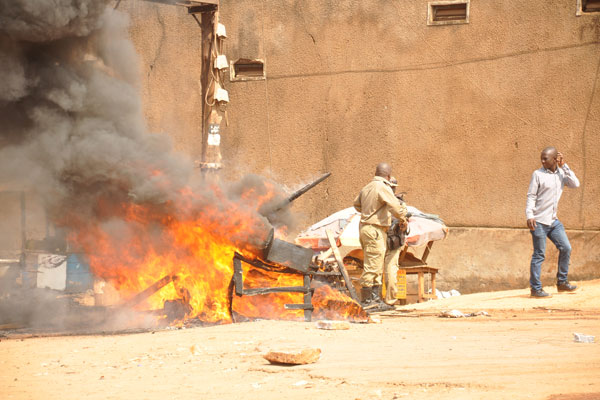Tensions still remain in Kenya, a day after at least 11 people were killed and 29 others sustaining injuries in violent clashes between anti-government protesters and police forces.
Monday’s unrest erupted during demonstrations held on Saba Saba, a symbolic date commemorating the country’s historic struggle for democratic reforms.
The protests, which swept through Nairobi and several other towns, were fueled by mounting public frustration over police brutality, soaring living costs, and allegations of corruption within President William Ruto’s administration.
Demonstrators called for the president’s resignation, accusing his government of failing to address the economic crisis and uphold democratic principles.
In the capital, security forces responded with heavy measures, erecting roadblocks and sealing off major routes leading to the city center.
Access to Parliament and the President’s Office was restricted with razor wire barricades, and both public and private vehicles were turned away. Pedestrians were stopped and questioned as tensions escalated.
“We are tired. Our children are hungry, and everything is expensive. We want Ruto to go,” said Josephine Njeri, one of the protesters who clashed with police before officers deployed tear gas to disperse crowds.
Interior Minister Kipchumba Murkomen condemned the violence, warning that the government would respond firmly to any destruction of property. “We respect the right to protest, but any form of violence or destruction of property will be met with firm action,” he said in a statement on Sunday.
Public Service Minister Geoffrey Ruku echoed the government’s stance, insisting that all civil servants must report to work despite the unrest. “We will not allow disruptions to public service,” he said.
Despite official assurances, central Nairobi resembled a city under siege. Most businesses remained shuttered, and residents described an atmosphere of fear and uncertainty. “It feels like a ghost town,” said David Otieno, a local taxi driver. “We haven’t seen this kind of tension since the post-election violence years ago.”
Saba Saba, observed annually on July 7, marks the 1990 protests that catalyzed Kenya’s transition from one-party rule to multiparty democracy in 1992. Organizers of this year’s demonstrations said they aimed to rekindle the spirit of civic resistance that defined that pivotal moment in the nation’s history.
As isolated protests continue, the country remains on edge, with citizens demanding accountability and reform amid deepening political and economic turmoil.
Source: Africafeeds.com


